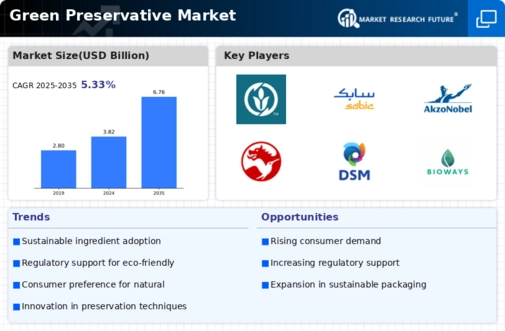The Green Preservative Market has become increasingly competitive as manufacturers seek to meet the rising demand for environmentally friendly products amid growing concerns about sustainability and health. The competitive landscape is shaped by various factors, including innovation in green chemistry, regulatory frameworks promoting biodegradable substances, and a shift towards eco-friendly practices among consumers and businesses alike. Companies within this market are focused on developing green preservatives that not only perform effectively but also conform to sustainability standards.
This trend has fostered a dynamic environment characterized by significant research and development efforts as well as strategic partnerships aimed at enhancing product offerings and market reach.NatureWorks stands out in the Green Preservative Market due to its commitment to sustainable production methods and a robust portfolio of bio-based products. The company has carved a strong presence by leveraging advanced biotechnology to produce its preservatives, resulting in high performance while minimizing environmental impact. By promoting the use of renewable resources and maintaining a strong focus on innovation, NatureWorks has consistently strengthened its market position.
Furthermore, its investments in research and development focus on sustainable formulations that cater to evolving consumer preferences, thereby enhancing its competitive advantage in the green preservatives sector. NatureWorks' effective marketing strategies and partnerships with key industry stakeholders further contribute to its strength, enabling it to better navigate the competitive landscape and capture market share.Arkema has made a significant mark in the Green Preservative Market by focusing on environmentally sustainable solutions that align with regulatory trends. The company's strengths lie in its diverse range of innovative products designed to provide effective preservation while being eco-friendly.
Arkema's commitment to research and innovation allows it to develop state-of-the-art preservative solutions that meet the increasing demand for sustainable options. Moreover, Arkema is proactive in its approach to partnerships and collaborations, seeking synergies that enhance its product development and market penetration. Its reputation for quality and reliability has enabled Arkema to establish strong relationships with clients and stakeholders within the sector, providing it with an edge in a highly competitive environment. With ongoing efforts in sustainability, Arkema is well-positioned to continue influencing the green preservative market amid escalating environmental concerns and demand for green alternatives.


















